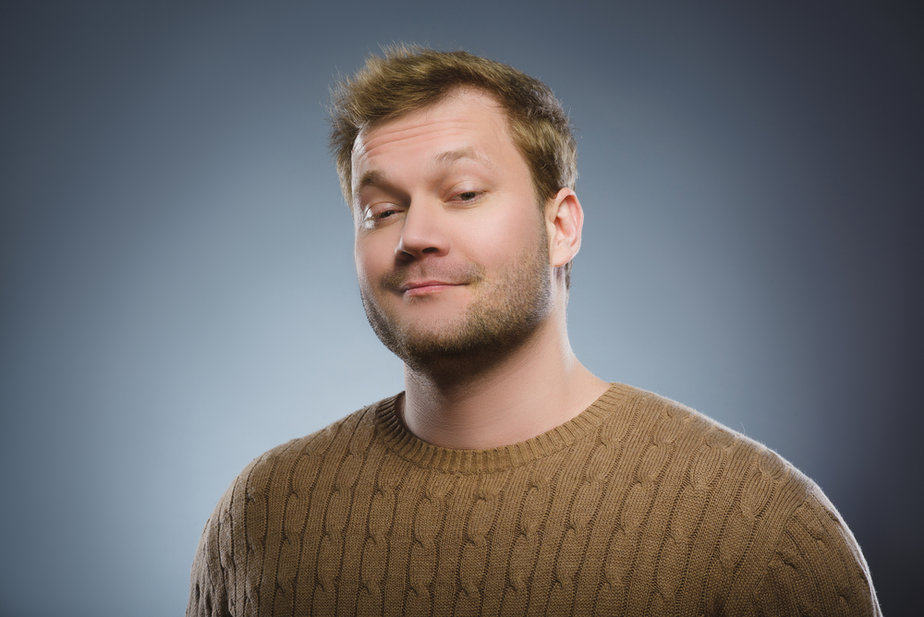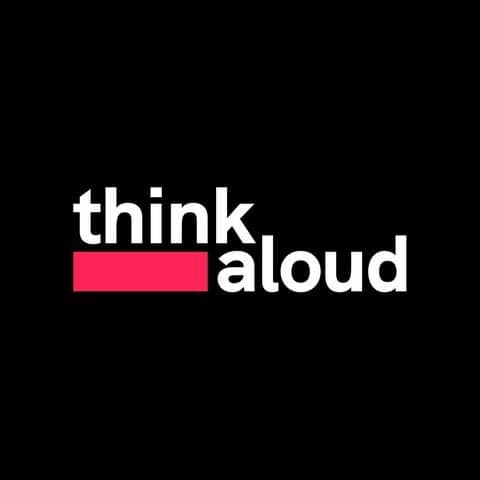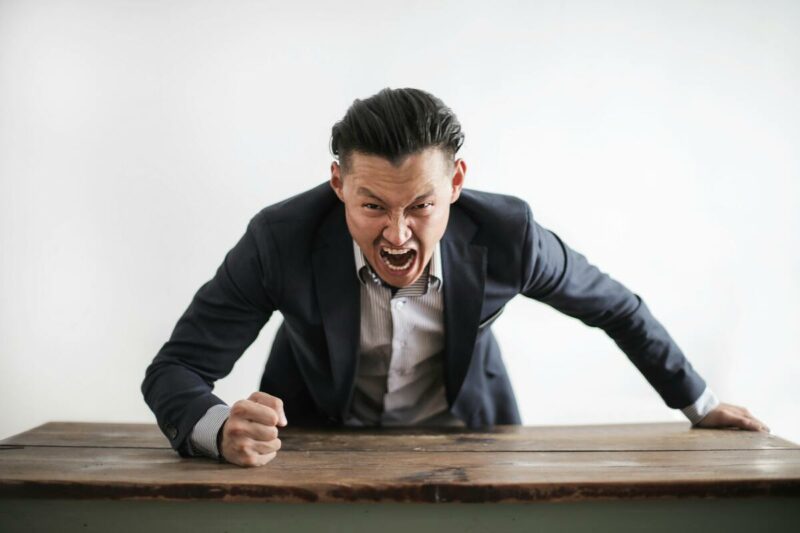12 Aggressive Body Language Signs And How To Handle Them

We’ve all had to deal with aggressive body language at some point. Whether a colleague raises a dismissive eyebrow at you when you’re speaking or a friend starts sneering at you out of sheer jealousy, the lines between aggressive body language and aggressive behavior are blurred.
Rather than firing back or starting something that might not be appropriate for the workplace or the environment you’re in, you might want to do your research and figure out what aggressive body language actually is. With that in mind, aggressive body language can lead to aggressive behavior, too.
When we’re talking about body language, we’re talking about non-verbal cues we use to communicate with people around us. Whether we’re referring to facial expressions, gestures, mannerisms, posture, or the tone of the voice, the things you don’t say can convey volumes of information.
Body language can be both positive and negative. Positive body language can build better relationships with people around us, but negative body language can damage and destroy the same relationships. Aggressive body language can be seen as a form of negative body language.
We do need to underline that aggressive body language can lead to a verbal or physical altercation, but that’s not always the case. With aggressive body language, you can experience the silent signs and signals from parents, friends, co-workers, or romantic partners – or you can showcase them yourself.
12 aggressive body language signs you need to know about ASAP

1. Poor posture
We’re starting with something simple and building our way up from there, OK? Poor posture might not be the first thing you think of when you picture someone acting aggressively toward you, but there’s a reason why witches and monsters almost always have hunched backs.
When you notice somebody blading, putting their hands up and their heads down, you’re probably going to assume they’re getting ready for a fight.
When you or someone you’re having a conversation with starts spreading their feet apart and putting their hands on their hips, you’re probably going to assume the same thing. We suggest de-escalating the situation by sitting down or walking away to show that you’re not going to entertain their efforts.
2. Pursed lips
Pursed lips are a tell-tale sign that you or someone you’re talking to might be getting a little too heated. Whether you’re fighting with someone, trying to win an argument, or even having a conversation with a stranger on the street, pursed lips are never a good sign.
When someone presses their lips tightly together, they’re trying to hold back their words and demonstrate restraint. That’s not because they’re trying to de-escalate the situation, but because they’re getting ready to give you a piece of their mind.
When that happens, you might want to stop the conversation or show the person that you’re open to a compromise.
3. Clenched jaw

When we’re angry or annoyed, we tend to instinctually clench our jaw and grind our teeth. We’ve all been told by friends and family members to loosen up, unclench our jaws, and calm down when we’re heated over something, but we never saw that as a sign of aggressive body language.
A clenched jaw indicates pending aggression, there’s no question about that. Whether that happens because the person you’re talking to is trying to control their emotional outburst or because they’re frustrated with something you’ve done, you need to get away from them.
We suggest you do the opposite – relax your jaw, keep a neutral expression on your face, and take one step back to show that you are giving them physical and emotional space.
4. Clenched fists
Open fists are almost always a sign of openness and acceptance, but clenched fists are the exact opposite of that. When someone clenches their fists while they’re talking to you, they’re getting ready to attack you either physically or verbally. Clenched fists are a sign of anger, frustration, and violence.
Step back and walk away the moment you notice someone clenching their fists at you. Clenched fists are oftentimes followed by the person slamming their foot on the floor to showcase repressed anger that’s about to escalate. When you see the foot stomp, run.
5. Flared nostrils
Now, flared nostrils might not always signal aggressive body language but they deserve a spot on the list, nonetheless. We flare our nostrils when we’re attracted to someone, excited, or even when we’re surprised by someone or something. Context matters, though.
When the person you’re talking to showcases other signs of aggressive body language, flared nostrils might be the cherry on top of what’s about to ensue. Flared nostrils are a natural response to anger, frustration, and threats, but you might need to analyze the situation before you react.
6. Puffed chest

When you go down the rabbit hole of researching different aggressive body language signs and signals, you might be taken aback by the sheer number of seemingly “normal” behaviors that are deemed as aggressive. We mentioned beforehand that context matters and we stand by that.
A puffed chest might mean that the person you’re talking to is trying to impress you or that they’re trying to appear bigger to intimidate you. Someone who’s trying to fight you might puff up their chest and hold their head high to exude confidence, perform better, and appear bigger.
7. Furrowed brows
Furrowed brows are a dominant gesture. When someone displays that gesture, they’re unhappy with something you said or did. Furrowed brows typically make an appearance at the beginning of the conversation when the person’s trying to figure out what’s going on.
When the conversation escalates, though, furrowed brows might signal repressed aggression and frustration, too. We’d argue that the best way to change the person’s attitude and demeanor would be to change the course of the conversation. Whatever you’re talking about isn’t worth getting into a fight for.
8. Teeth licking
We’ve got another silent signal that can be indicative of both aggression and attraction. What does that say about us? Whatever the case might be, teeth licking typically occurs right before a fight or right after the person’s been provoked by something or someone.
Teeth licking can be done consciously with the intent of showing the person you’re fighting with that you’re getting frustrated or unconsciously out of anger and aggression. Teeth licking can be incredibly intimidating and that’s why you’re better off leaving the situation before it escalates.
9. Squinting

People squint for a million reasons and that’s why you shouldn’t be quick to accuse someone of being aggressive toward you solely because they’re squinting when they’re talking to you. Squinting stems from our need to protect our eyes from whatever’s coming our way – words or actions.
So, when you’re arguing with someone and you notice them squinting, that might be a sign that they’re getting ready to attack you physically or verbally. Whenever you’re threatened by someone’s behavior, you need to remove yourself from the situation ASAP.
10. Scowling or sneering
Scowling and/or sneering refers to a facial expression we make when we raise the corner of our mouth upward and keep the rest of the mouth shut. Sometimes, we expose our teeth to appear more threatening, too.
Both scowling and sneering occur when we’re angry, frustrated, and threatened by someone or something. Before you square up and get ready to fight, try ending the argument by showcasing a neutral expression and keeping your arms open.
When you do that, you’re going to appear friendly and calm which might make the other person calm down, too.
11. Reddening of the face
Reddening of the face (or blushing!) can mean a million things. It is normally involuntary which means it’s not something you can control. It occurs as a response to emotional stress, whether that’s passion, embarrassment, shyness, fear, anger, or romantic stimulation.
When someone’s face becomes red with anger, that means that the situation might have already escalated and that you can’t do anything to calm them down. With that in mind, when someone’s pupils dilate, nostrils flair, and skin becomes flushed with blood, you need to run away.
12. Invasion of space
Invading someone’s space almost always means aggression. It’s supposed to give off a sense of disrespect and provoke a negative or aggressive reaction from the other person.
What does the invasion of space entail, though? Invasion of space differs depending on how close you are to the person you’re talking to.
When you’re talking to your friends or family members, you don’t need that much space away from them to feel comfortable. When you’re talking to a stranger, though, you need your personal space to feel safe and in control.
What to do when you experience aggressive body language

Whether you’re a patient person or known to explode quite easily, there’s a chance you’re going to meet someone who makes you angry or you’re going to make someone angry on more than one occasion. What are we trying to say?
Regardless of the circumstances, you’re going to experience aggressive body language sooner or later. What you do when that happens can make a world of difference. Remove yourself from the situation. Walk away. Try to open up your mind and heart. Think of the consequences.
Whatever you decide to do, good luck!
Read more: Body Language: How To Understand The Words We Don’t Speak






